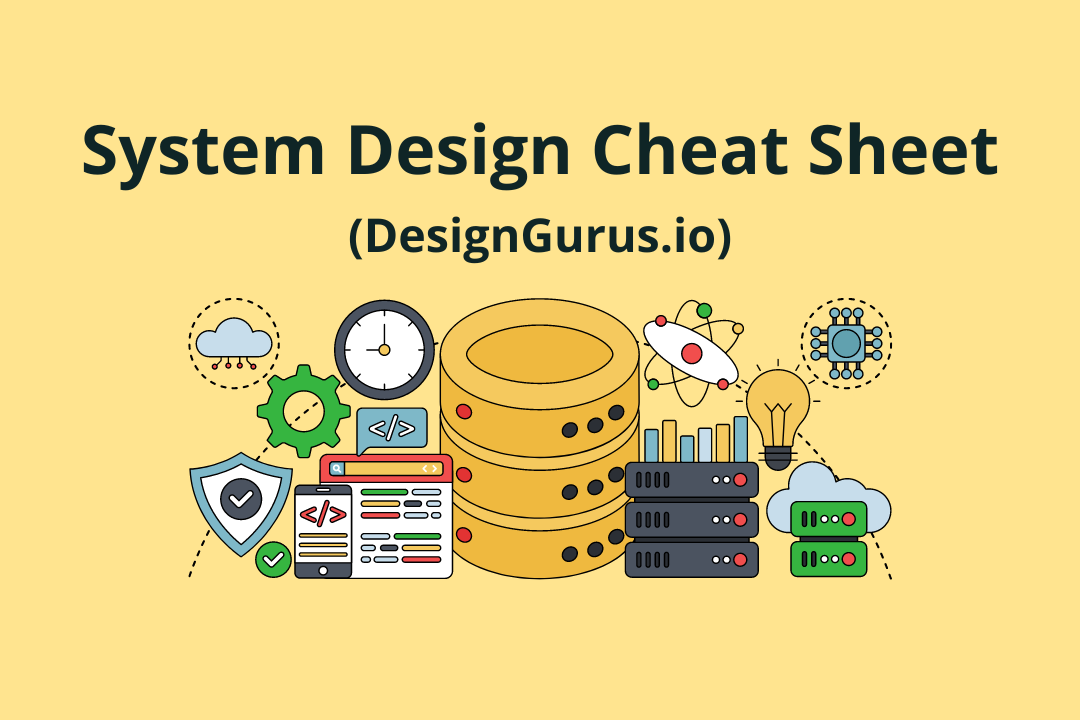Grokking the System Design Interview
Grokking the System Design Interview is the industry’s most trusted System Design Interview course, featuring video lectures, over 30,000 five-star reviews, and more than 140,000 learners.
Course Overview
This is the original Grokking System Design course (formerly on Educative), now exclusively on DesignGurus.io. System Design Interviews test how you think about scalability, reliability, and trade-offs under pressure. Grokking the System Design Interview distills the core concepts that FAANG-level engineers use every day, from load balancing and caching to data partitioning and microservices architecture. You’ll learn how to approach open-ended design questions methodically, evaluate alternatives intelligently, and communicate like a senior architect — even if you’re still mid-career. With real-world case studies, interactive diagrams, video lessons, and structured frameworks, this course gives you the confidence to design any large-scale system from scratch. The curriculum of this course is continually updated to reflect the latest industry trends and best practices, ensuring you stay ahead of the curve. Whether you’re interviewing at a FAANG company or any tech-driven organization, this course gives you the inside track to building the systems of tomorrow and landing the role you deserve.
What you'll learn
- A proven approach to systematically tackle any system design question — from requirements gathering to final detailed solution.
- Master the core concepts of scalability, reliability, and performance to build robust, web-scale systems.
- Dive into caching strategies, load balancing methods, and database sharding to handle complex, large-scale scenarios.
- Get insider tips from ex-Google, Facebook, Amazon, and Microsoft interviewers on what top tech companies expect in system design interviews.
- Master the art of requirements engineering — from clarifying requirements to understanding constraints — for large-scale systems.
- Learn system design with real-world patterns: microservices, event-driven architectures, data partitioning, and more.
- Explore hands-on examples like designing Instagram, Uber-like services, and messaging platforms to gain practical experience.
- Understand how to choose the right technology stack, communication protocol (REST vs. gRPC), and hosting strategy (cloud vs. on-prem).
Course Content
1.
Introduction to System Design Interview
2.
Glossary of System Design Basics
3.
System Design Trade-offs
New4.
System Design Problems
5.
Appendix
What people say about our courses






About the Author
Meet Arslan Ahmad
The Expert Behind Grokking the System Design Interview

Industry Expertise & Leadership
Arslan Ahmad is the lead author of Grokking the System Design Interview. As the founder of Design Gurus and a former FAANG hiring manager, he has worked at industry giants like Facebook (now Meta) and Microsoft.
He has conducted hundreds of system design interviews, giving him unique insight into what top tech companies look for in candidates.
The course also incorporates expertise from senior engineers at Google, Meta, Amazon, Microsoft, and Uber, ensuring you learn system design best practices from professionals who have built and scaled real-world systems.
500+
Interviews Conducted
10k+
Students Taught
Related Courses

$110
$145

$110
FAQs
What is Grokking the System Design Interview and who is it for?
Grokking the System Design Interview is an online course designed to help software engineers master system design interviews. It’s the original, best-selling system design prep resource (formerly on Educative) that has guided over 140,000 learners. The course is crafted for anyone preparing for system design interviews – from junior developers with no design experience to seasoned engineers who want to refine their skills. If you’re aiming for roles at FAANG or any tech company, Grokking the System Design Interview provides a structured, easy-to-follow curriculum that ensures you’re ready to design scalable systems and impress in your interview.
Who created Grokking the System Design Interview, and what are their credentials?
Grokking the System Design Interview was created by the team at Design Gurus, led by experienced engineers who have worked as hiring managers at top tech companies (Google, Meta, Amazon, Microsoft, etc.). The course’s founder, Arslan Ahmad, is an ex-FAANG engineer who has been on both sides of the interview table.Is Grokking the System Design Interview suitable for beginners, or do I need prior system design experience?No prior experience is required – the course is designed to be beginner-friendly. Grokking the System Design Interview is structured to introduce and explain the basics of system design clearly, making it suitable even for those who are new to the subject.
What sets Grokking the System Design Interview apart from other system design resources?
Grokking the System Design Interview stands out because it pioneered a clear, structured approach to system design prep. Unlike piecemeal blogs or videos, this course offers a cohesive curriculum crafted by actual FAANG interviewers. Complex concepts are explained in simple language with intuitive diagrams and videos, so you truly understand them.
How long does it take to complete Grokking the System Design Interview?
Grokking the System Design Interview offers roughly 20 hours of rich content, broken into about 65 bite-sized lessons. It’s completely self-paced – you can spread the learning over a few weeks or accelerate through it, depending on your schedule. Many users dedicate an hour or two per day and finish in under a month, but you’re free to go at your own pace. The course platform tracks your progress, allowing you to revisit lessons at any time. The goal is a thorough understanding, not just speed, so you can take the time you need to absorb each concept.
Does Grokking the System Design Interview provide a certificate of completion?
Yes. Upon finishing all modules of the course, you will receive a certificate of completion from Design Gurus.
Will this course help me get a FAANG interview?
Yes — our students routinely clear Google, Meta, Amazon, and Microsoft interviews because they learn how to explain design decisions clearly and defend trade-offs.
Is this course updated for 2025 interview trends?
Absolutely. It covers modern topics such as streaming systems, GeoDNS, event-driven architecture, and global load balancing — all frequently appearing in 2025 interviews.


